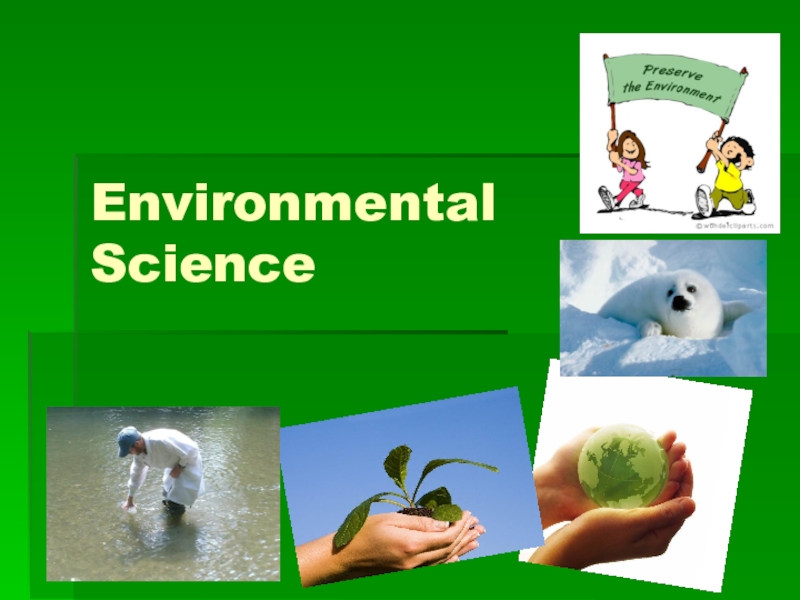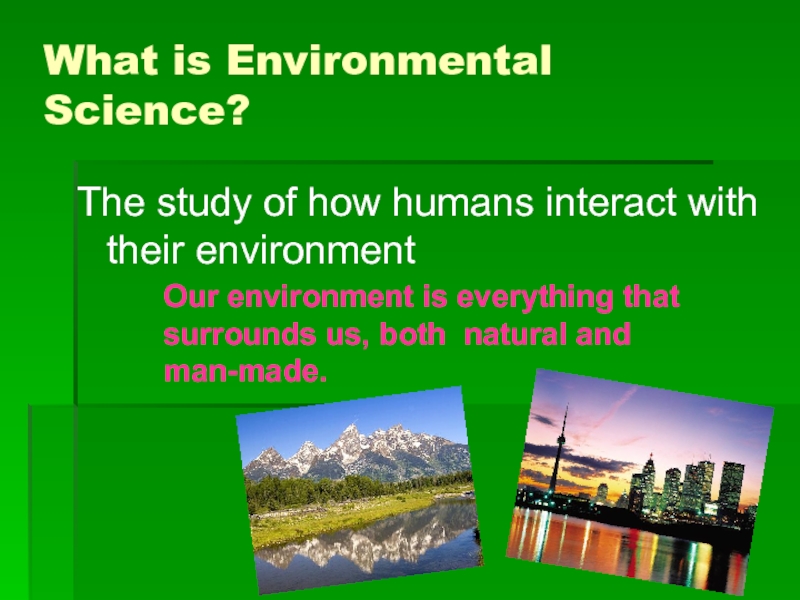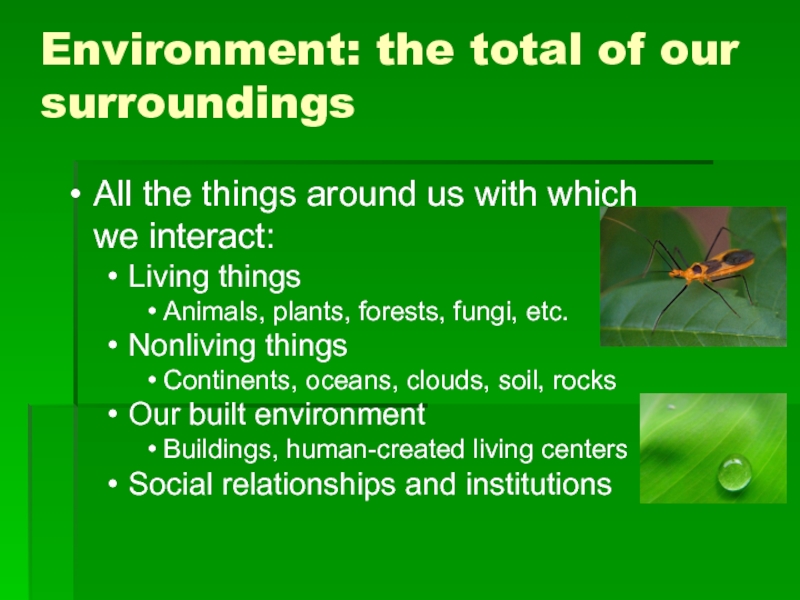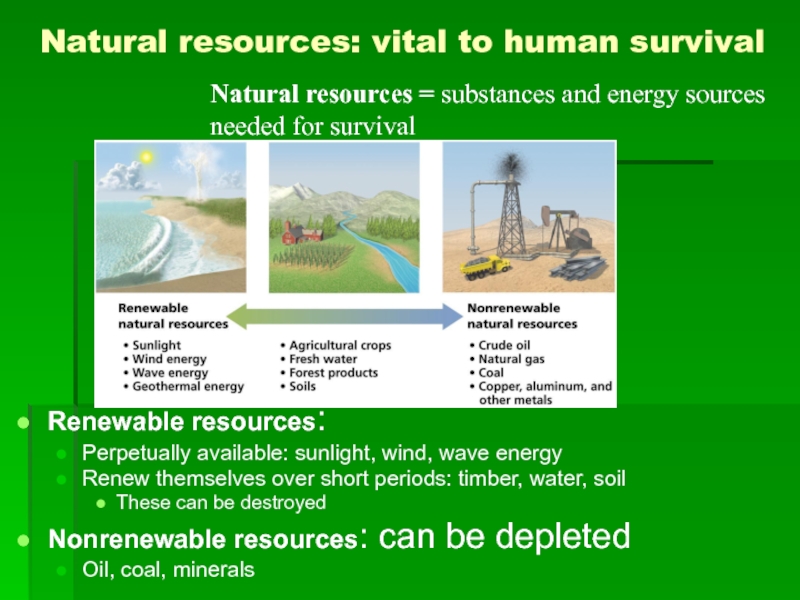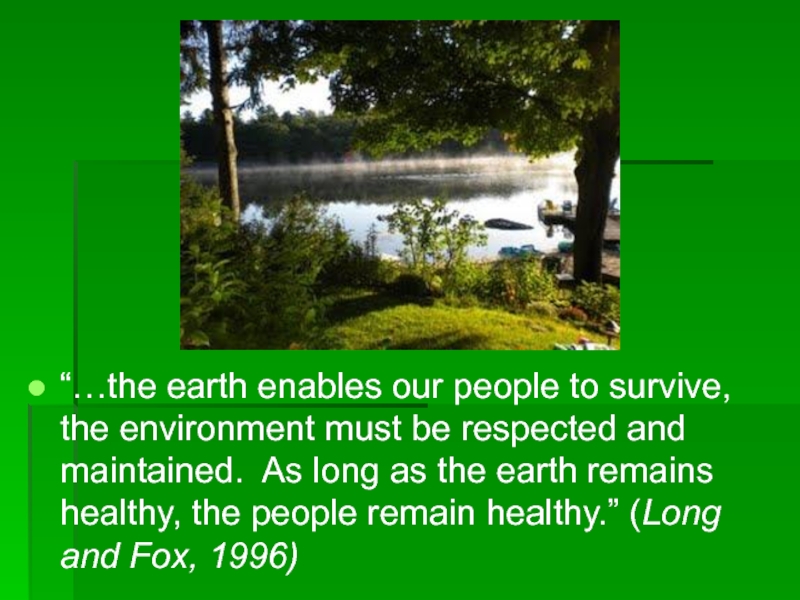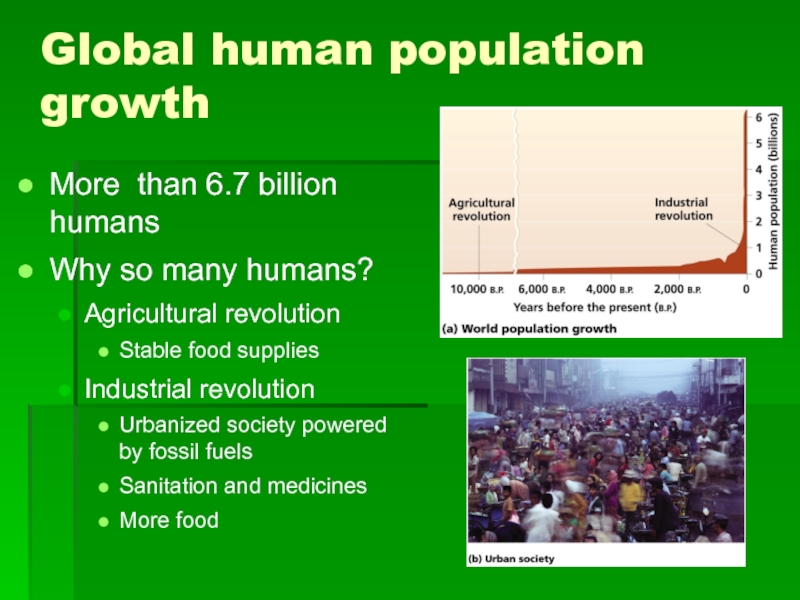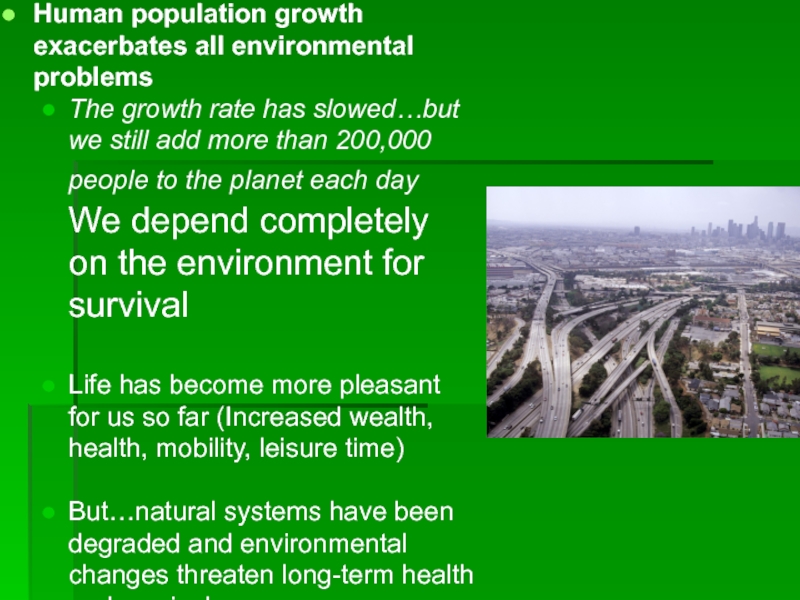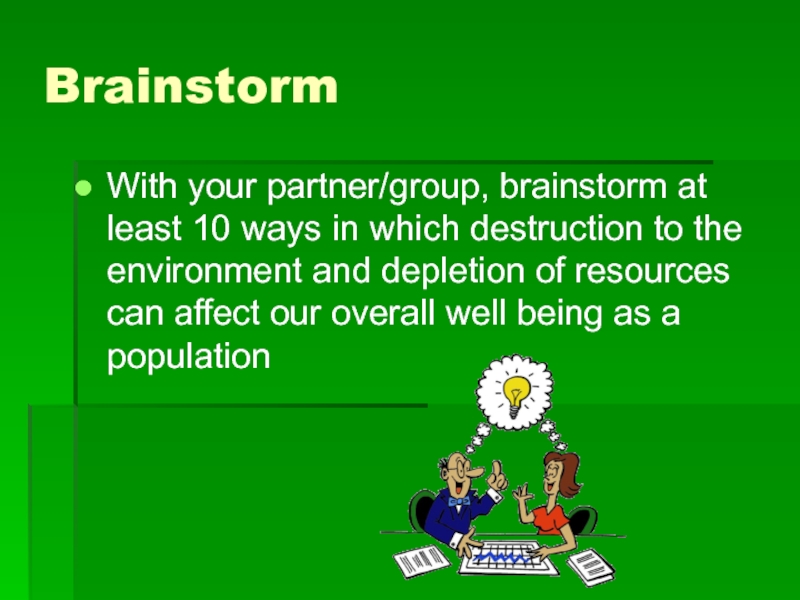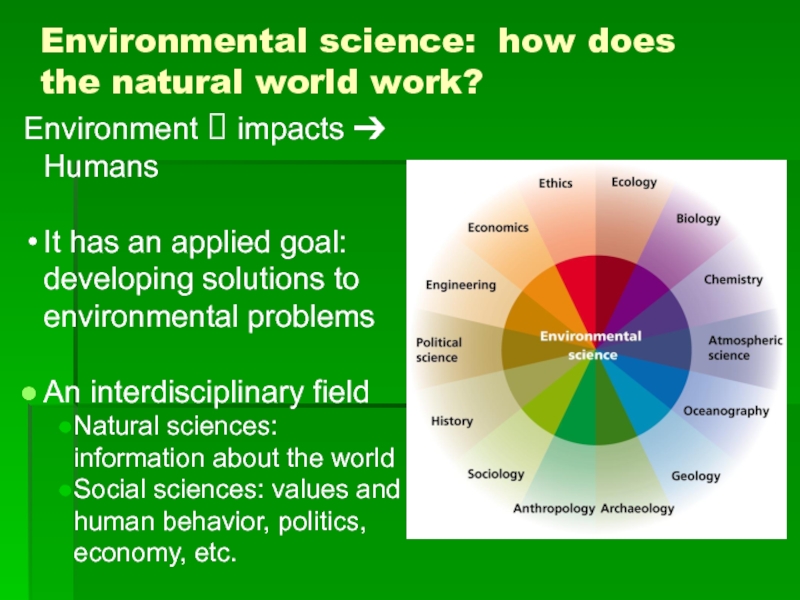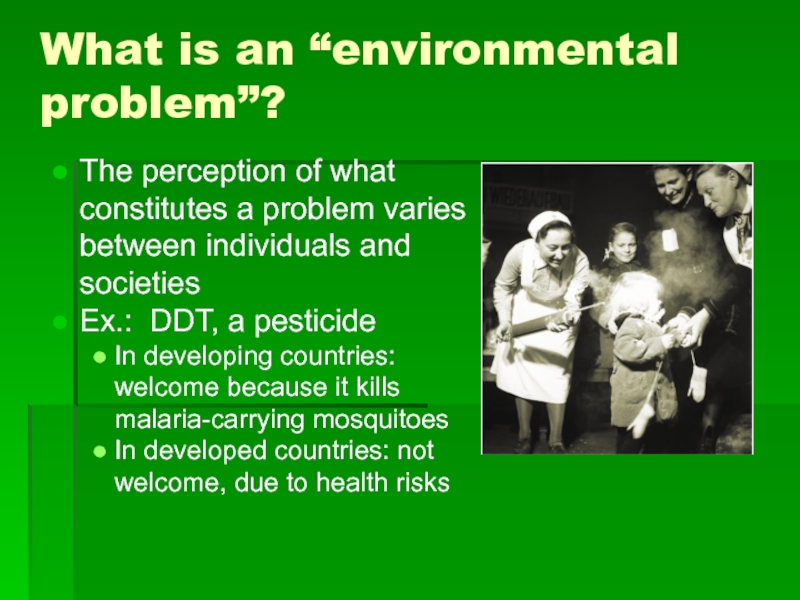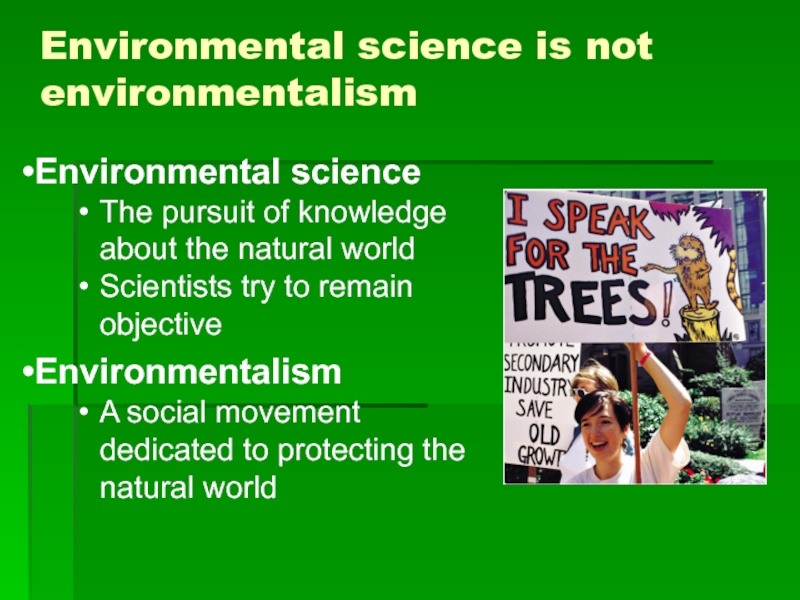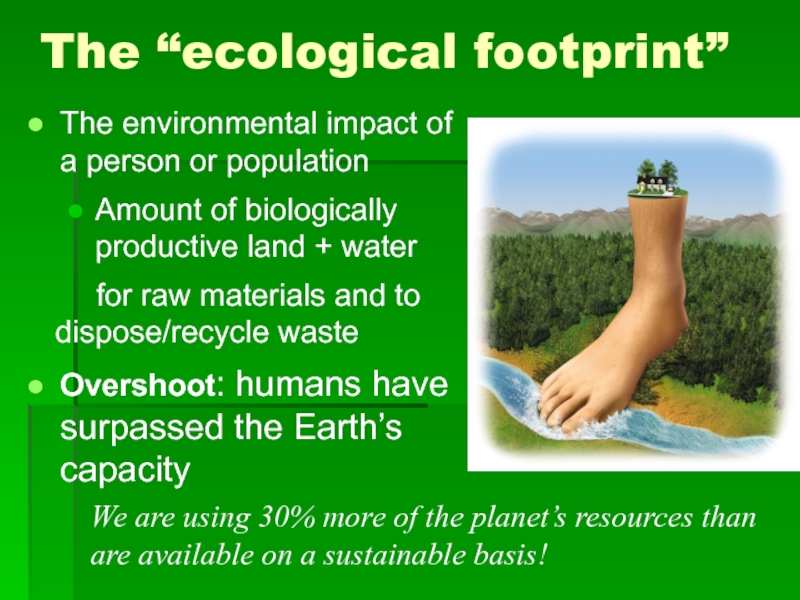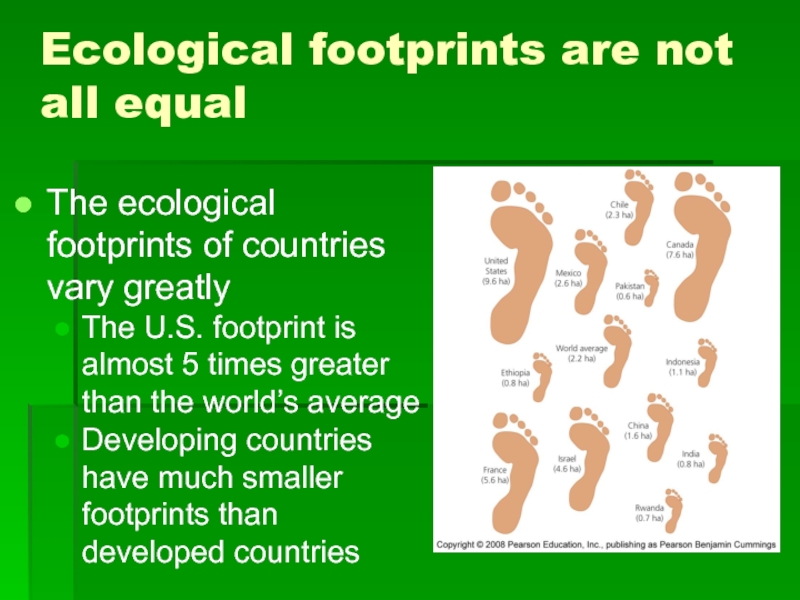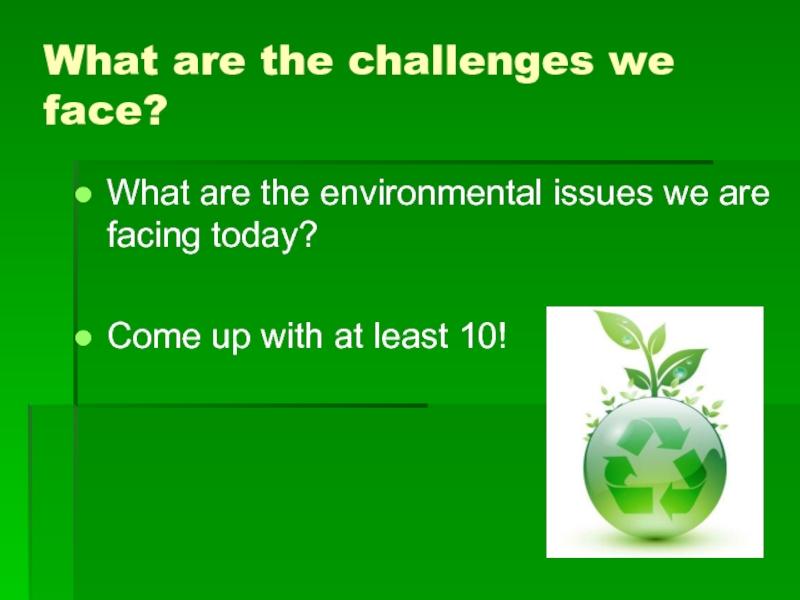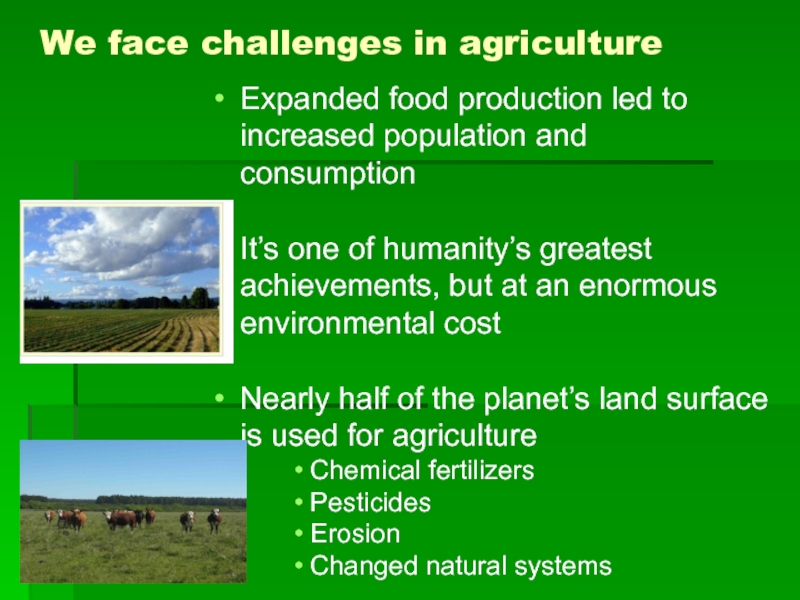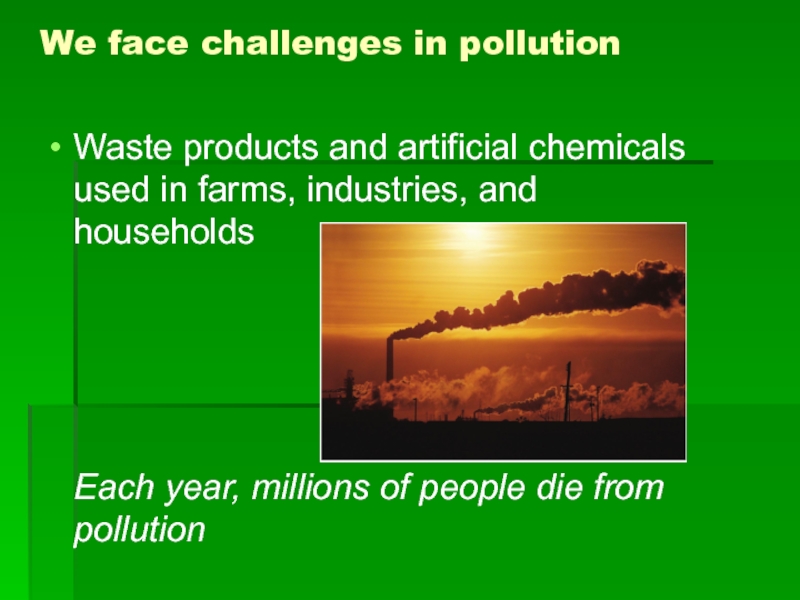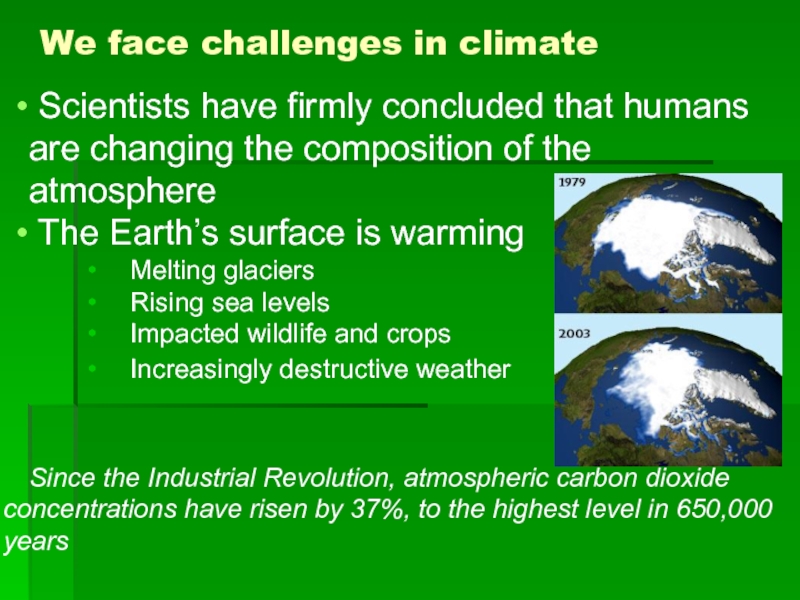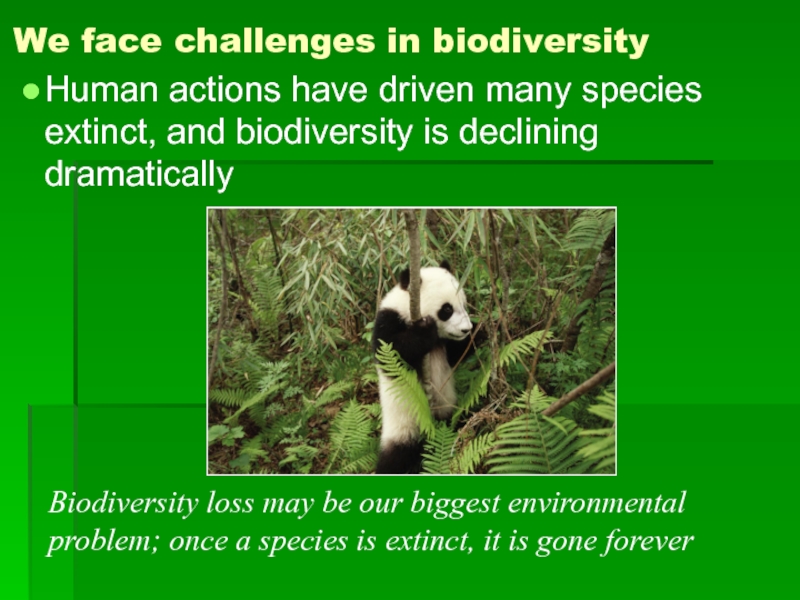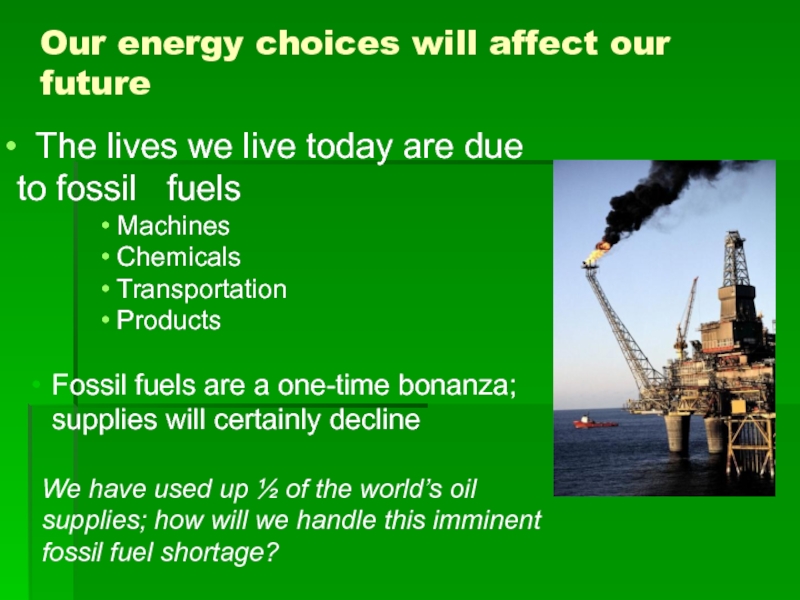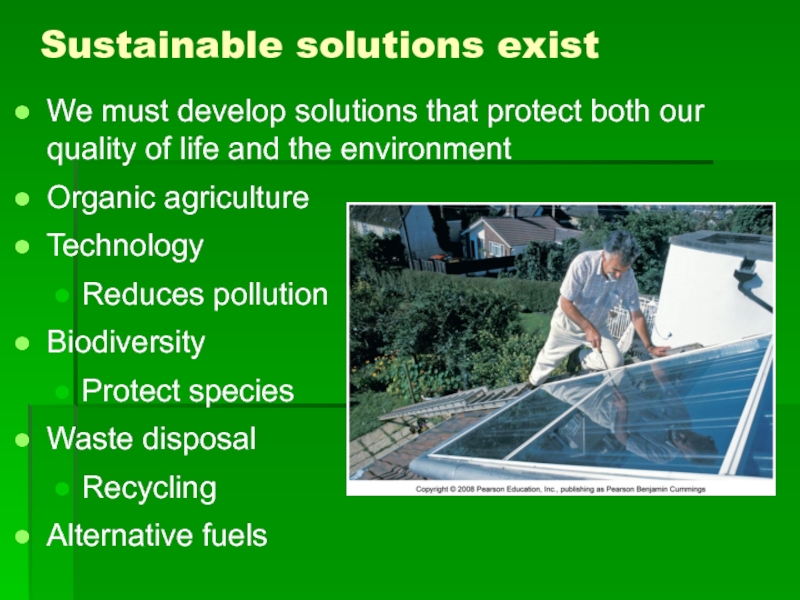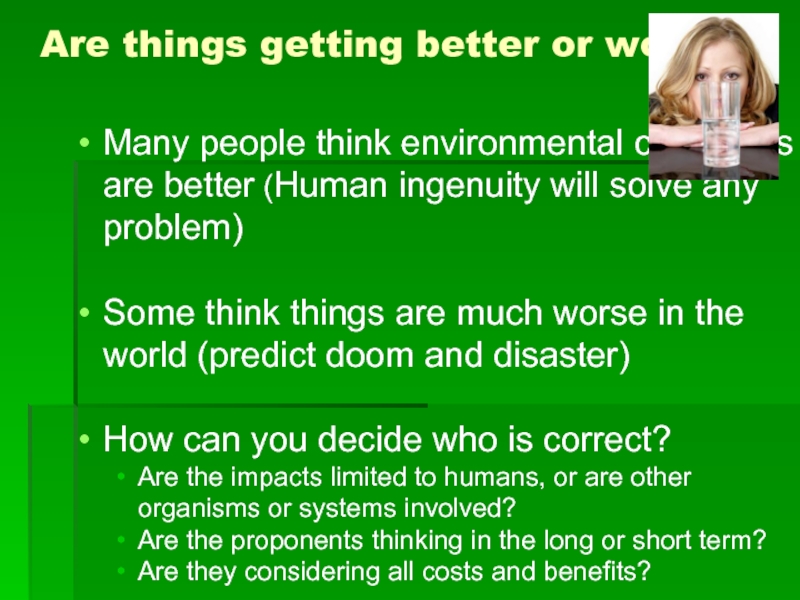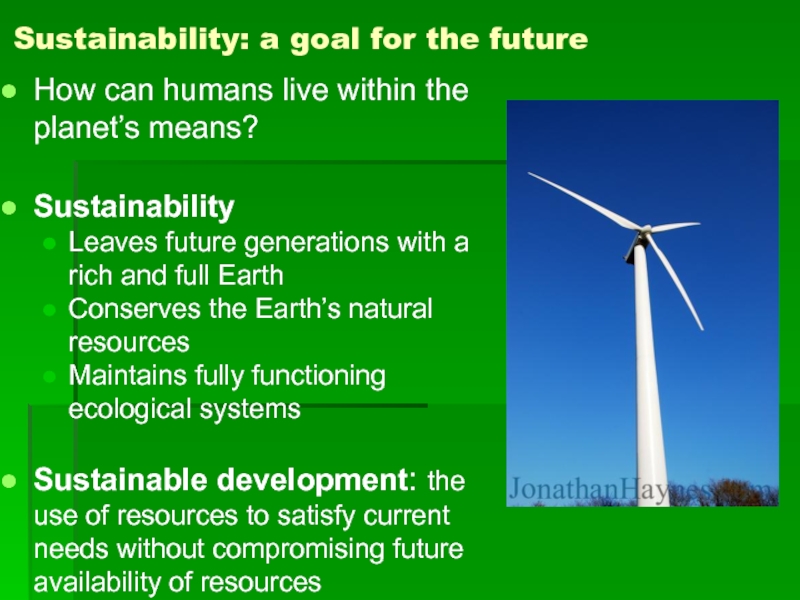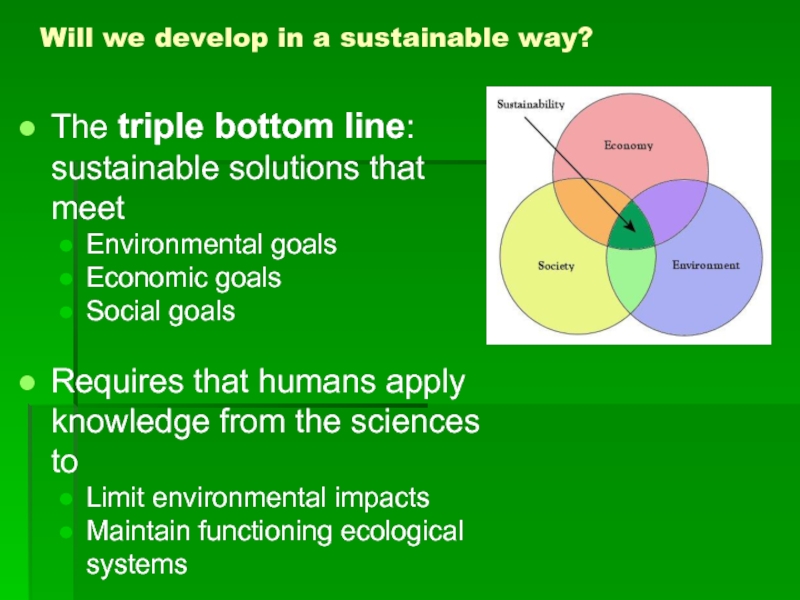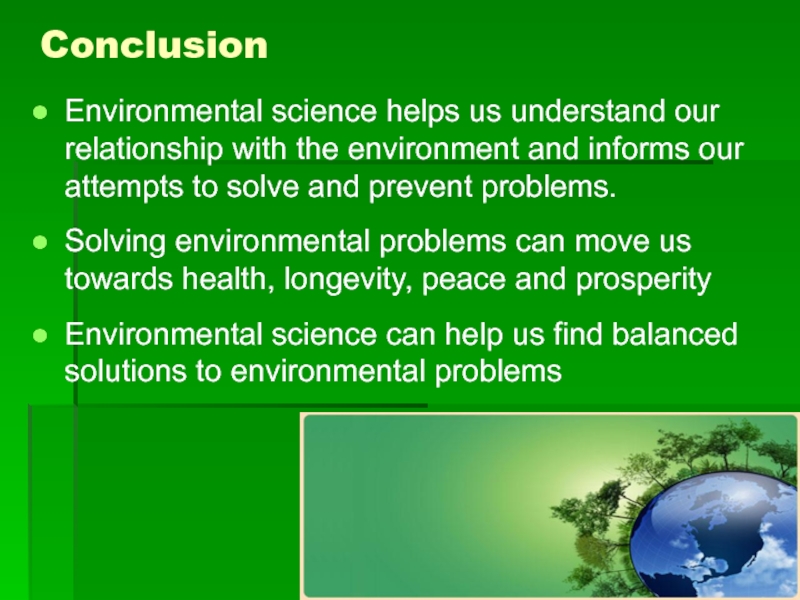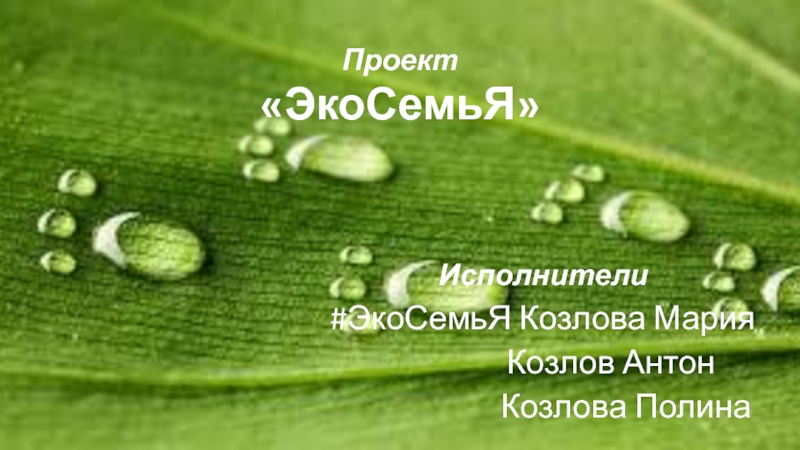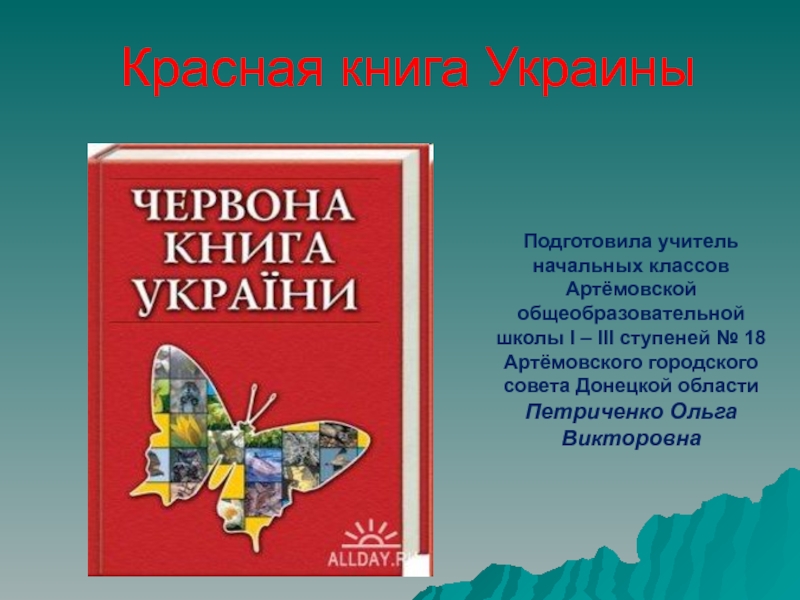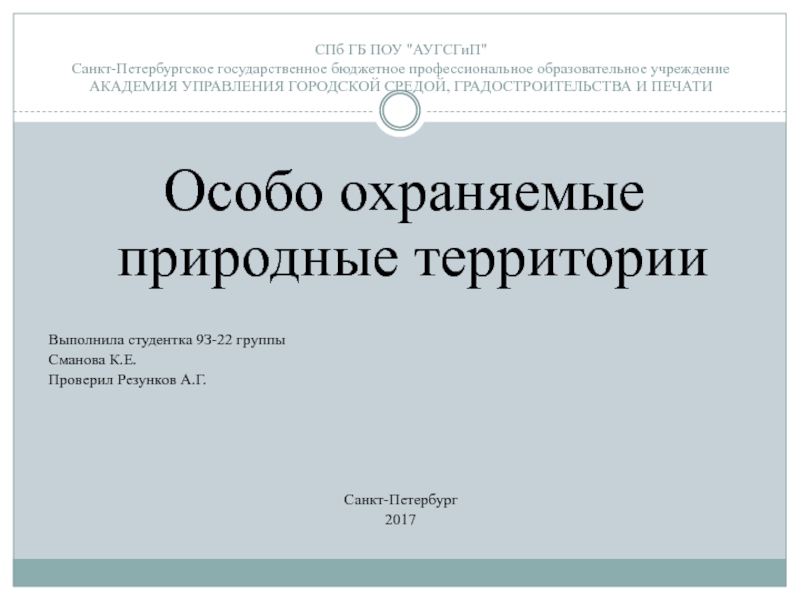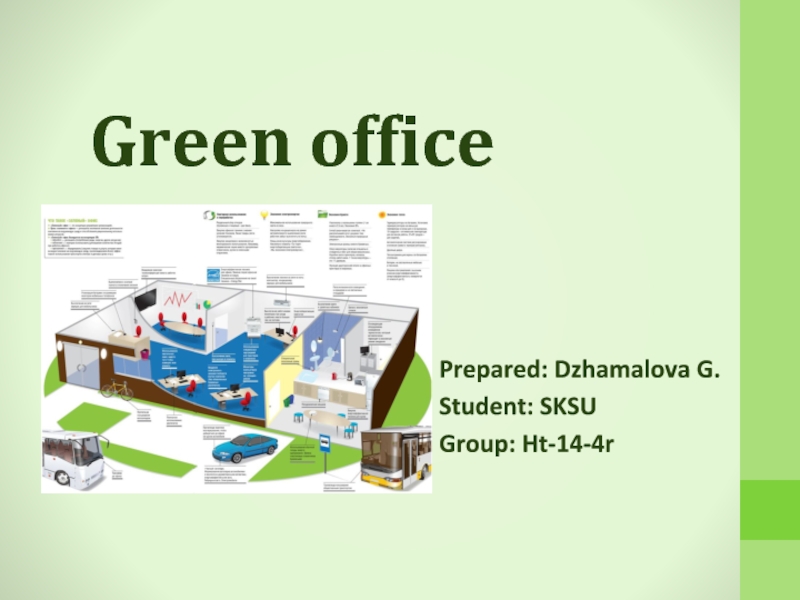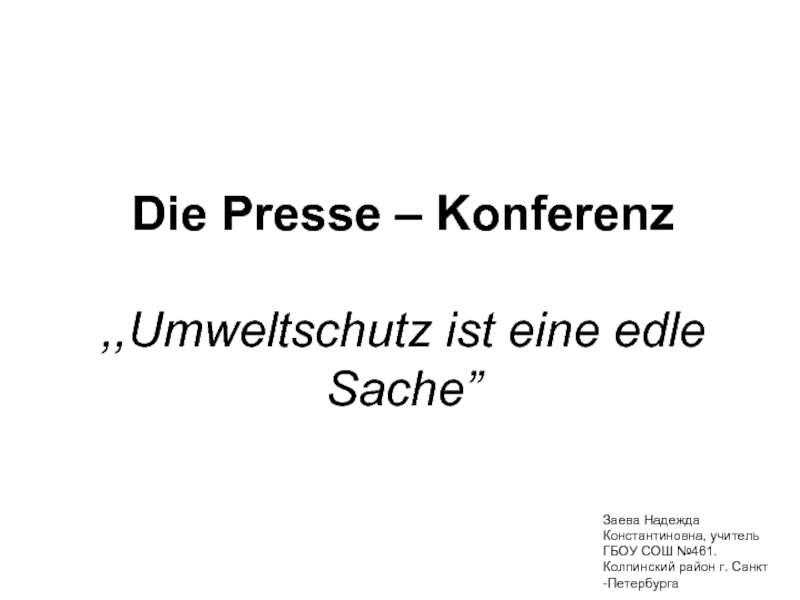- Главная
- Разное
- Дизайн
- Бизнес и предпринимательство
- Аналитика
- Образование
- Развлечения
- Красота и здоровье
- Финансы
- Государство
- Путешествия
- Спорт
- Недвижимость
- Армия
- Графика
- Культурология
- Еда и кулинария
- Лингвистика
- Английский язык
- Астрономия
- Алгебра
- Биология
- География
- Детские презентации
- Информатика
- История
- Литература
- Маркетинг
- Математика
- Медицина
- Менеджмент
- Музыка
- МХК
- Немецкий язык
- ОБЖ
- Обществознание
- Окружающий мир
- Педагогика
- Русский язык
- Технология
- Физика
- Философия
- Химия
- Шаблоны, картинки для презентаций
- Экология
- Экономика
- Юриспруденция
Environmental Science презентация
Содержание
- 1. Environmental Science
- 2. What is Environmental Science? The study of
- 3. Environment: the total of our surroundings All
- 4. Natural resources: vital to human survival Renewable
- 5. “…the earth enables our people to
- 6. Global human population growth More than 6.7
- 7. Human population growth exacerbates all environmental problems
- 8. Brainstorm With your partner/group, brainstorm at least
- 9. Environmental science: how does the natural world
- 10. What is an “environmental problem”? The perception
- 11. Environmental science is not environmentalism Environmental science
- 12. The “ecological footprint” The environmental impact of
- 13. Ecological footprints are not all equal The
- 14. What are the challenges we face? What
- 15. We face challenges in agriculture Expanded food
- 16. We face challenges in pollution Waste products
- 17. We face challenges in climate Scientists
- 18. We face challenges in biodiversity Human actions
- 19. Our energy choices will affect our future
- 20. Sustainable solutions exist We must develop solutions
- 21. Are things getting better or worse? Many
- 22. Sustainability: a goal for the future How
- 23. Will we develop in a sustainable way?
- 24. Conclusion Environmental science helps us understand our
Слайд 2What is Environmental Science?
The study of how humans interact with their
Our environment is everything that surrounds us, both natural and man-made.
Слайд 3Environment: the total of our surroundings
All the things around us with
Living things
Animals, plants, forests, fungi, etc.
Nonliving things
Continents, oceans, clouds, soil, rocks
Our built environment
Buildings, human-created living centers
Social relationships and institutions
Слайд 4Natural resources: vital to human survival
Renewable resources:
Perpetually available: sunlight, wind, wave
Renew themselves over short periods: timber, water, soil
These can be destroyed
Nonrenewable resources: can be depleted
Oil, coal, minerals
Natural resources = substances and energy sources needed for survival
Слайд 5
“…the earth enables our people to survive, the environment must be
Слайд 6Global human population growth
More than 6.7 billion humans
Why so many humans?
Agricultural
Stable food supplies
Industrial revolution
Urbanized society powered by fossil fuels
Sanitation and medicines
More food
Слайд 7Human population growth exacerbates all environmental problems
The growth rate has slowed…but
Life has become more pleasant for us so far (Increased wealth, health, mobility, leisure time)
But…natural systems have been degraded and environmental changes threaten long-term health and survival
Слайд 8Brainstorm
With your partner/group, brainstorm at least 10 ways in which destruction
Слайд 9Environmental science: how does the natural world work?
Environment ? impacts ➔
It has an applied goal: developing solutions to environmental problems
An interdisciplinary field
Natural sciences: information about the world
Social sciences: values and human behavior, politics, economy, etc.
Слайд 10What is an “environmental problem”?
The perception of what constitutes a problem
Ex.: DDT, a pesticide
In developing countries: welcome because it kills malaria-carrying mosquitoes
In developed countries: not welcome, due to health risks
Слайд 11Environmental science is not environmentalism
Environmental science
The pursuit of knowledge about the
Scientists try to remain objective
Environmentalism
A social movement dedicated to protecting the natural world
Слайд 12The “ecological footprint”
The environmental impact of a person or population
Amount of
for raw materials and to dispose/recycle waste
Overshoot: humans have surpassed the Earth’s capacity
We are using 30% more of the planet’s resources than are available on a sustainable basis!
Слайд 13Ecological footprints are not all equal
The ecological footprints of countries vary
The U.S. footprint is almost 5 times greater than the world’s average
Developing countries have much smaller footprints than developed countries
Слайд 14What are the challenges we face?
What are the environmental issues we
Come up with at least 10!
Слайд 15We face challenges in agriculture
Expanded food production led to increased population
It’s one of humanity’s greatest achievements, but at an enormous environmental cost
Nearly half of the planet’s land surface is used for agriculture
Chemical fertilizers
Pesticides
Erosion
Changed natural systems
Слайд 16We face challenges in pollution
Waste products and artificial chemicals used in
Слайд 17We face challenges in climate
Scientists have firmly concluded that humans
The Earth’s surface is warming
Melting glaciers
Rising sea levels
Impacted wildlife and crops
Increasingly destructive weather
Since the Industrial Revolution, atmospheric carbon dioxide concentrations have risen by 37%, to the highest level in 650,000 years
Слайд 18We face challenges in biodiversity
Human actions have driven many species extinct,
Biodiversity loss may be our biggest environmental problem; once a species is extinct, it is gone forever
Слайд 19Our energy choices will affect our future
The lives we live
Machines
Chemicals
Transportation
Products
Fossil fuels are a one-time bonanza; supplies will certainly decline
We have used up ½ of the world’s oil supplies; how will we handle this imminent fossil fuel shortage?
Слайд 20Sustainable solutions exist
We must develop solutions that protect both our quality
Organic agriculture
Technology
Reduces pollution
Biodiversity
Protect species
Waste disposal
Recycling
Alternative fuels
Слайд 21Are things getting better or worse?
Many people think environmental conditions are
Some think things are much worse in the world (predict doom and disaster)
How can you decide who is correct?
Are the impacts limited to humans, or are other organisms or systems involved?
Are the proponents thinking in the long or short term?
Are they considering all costs and benefits?
Слайд 22Sustainability: a goal for the future
How can humans live within the
Sustainability
Leaves future generations with a rich and full Earth
Conserves the Earth’s natural resources
Maintains fully functioning ecological systems
Sustainable development: the use of resources to satisfy current needs without compromising future availability of resources
Слайд 23Will we develop in a sustainable way?
The triple bottom line: sustainable
Environmental goals
Economic goals
Social goals
Requires that humans apply knowledge from the sciences to
Limit environmental impacts
Maintain functioning ecological systems
Слайд 24Conclusion
Environmental science helps us understand our relationship with the environment and
Solving environmental problems can move us towards health, longevity, peace and prosperity
Environmental science can help us find balanced solutions to environmental problems
